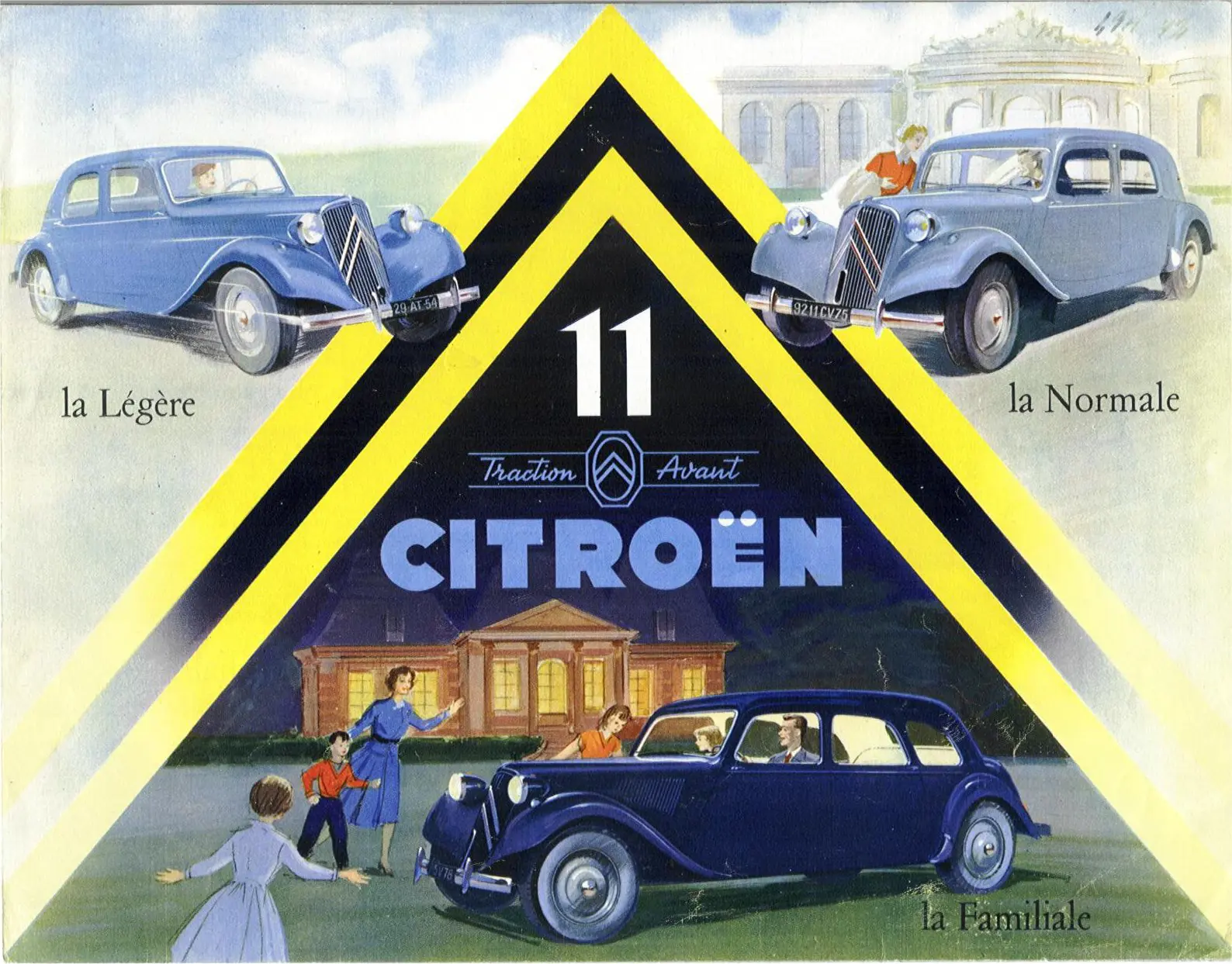1955 CITROEN ‘ONZE NORMALE’ TRACTION AVANT
24 October 2023
When Citroën unveiled the original Traction Avant to the public on the 18th of April 1934, it marked an evolutionary step in the development of the motor car. There was the elegant uni-body construction, the front wheel drive, the torsion bar suspension and the hydraulic brakes. By comparison, other saloons of that era looked as though they had recently emerged from The Ark.
André Lefèbvre was the Traction project’s engineer, with Flaminio Bertoni in charge of the design. L’Auto magazine believed the latest Citroën was “so new, so daring, so packed with original solutions, and so different, that it deserves the epithet ‘sensational’”. The dashboard gear lever seemed to intrigue The Daily Telegraph – “a tiny finger and thumb affair”. By the end of 1934, an advertisement in the London Evening Standard promised the Traction was “two years ahead”. Twenty was probably nearer the mark.

The original Traction was the 1.3-litre 7A Berline. In late 1934, a 1911cc engine became available in the 11CV Onze Normale and the smaller Onze Légère. The Traction gained an external opening boot in 1935 and rack & pinion steering in 1936. Across the Channel, the company began assembling RHD Traction Avants for the UK and Commonwealth markets. In 1926, Citroën established their plant in Slough to circumvent import duties, and the British-assembled models boasted leather trim, a wooden dashboard, a chromium radiator grille, a Lucas 12-volt electrical system and the option of a sliding roof.
In June 1938, Citroën introduced the 15/6 - aka the ‘Big Six’ in the UK - with a 2,867cc six-cylinder engine. Production halted in June 1941, and during the Second World War, the Tractions found great favour with The Resistance thanks to their famed agility. Manufacture resumed in 1946, with the Traction initially available in any colour you like so long as it was black. Meanwhile, the infamous Gang des Tractions Avant used the Citroën to outrun the police.
The Traction gained a facelift in 1952, the range with a ‘big boot’ and flashing indicators front and rear. For 1954, the 15/6 was also available as the ‘15/6H’ with a rear suspension that employed pressurised hydraulic fluid – a harbinger of the replacement DS, which debuted in 1955. Citroën continued to build the Onze Normale and the Onze Légère until 1957, the last examples having a slightly more powerful engine. However, the 15/6H gained worldwide fame long after the end of Traction production in the 1960-1963 BBC Television adaptation of the Maigret novels.
Perhaps the best summary of the Traction is from the great motoring writer Bill Boddy when he tested the Onze Normale’s cousin from Slough, the Big Fifteen, in 1953. By then, the design was nearly 20 years old, but:
The Citroën ‘Big Fifteen’ imparts a feeling of dignity and quality expected of far more costly cars, and the manner in which it combines good handling characteristics, spaciousness, comfort, security and economy make it an outstanding vehicle in spite of the fact that its design has remained generally unchanged over a considerable number of years. Its appearance is as imposing as it is in good taste, and the unchanged aspects of the front-wheel-drive Citroën are its own reward.
And that remains the case seventy years later.
